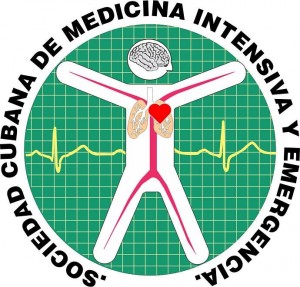Evaluación de insuficiencia renal aguda según los criterios “RIFLE” en pacientes ingresados en terapia intensiva. Evaluation of acute renal failure according to the "RIFLE" approaches in patients admitted in intensive care unit
Palabras clave:
insuficiencia renal aguda, clasificación RIFLE, terapia intensiva, pronóstico / acute renal failure, classification RIFLE, intensive care, prognosisResumen
Introducción: La insuficiencia renal aguda (IRA) es un síndrome multifactorial de etiología variada e incidencia que difiere según países y poblaciones de estudio. Puede manifestarse como fenómeno aislado o como parte de un síndrome complejo que afecta a varios órganos.
Objetivo: Evaluar según los criterios “RIFLE” la insuficiencia renal aguda en los pacientes ingresados en terapia intensiva.
Método: Estudio observacional de corte transversal de los pacientes ingresados en la unidad de cuidados intensivos UCI3 del Hospital General Docente Abel Santamaría Cuadrado en el período de un año. La principal variable fue la Insuficiencia renal según los criterios RIFLE. Se utilizó la prueba de Chi cuadrado para variables cualitativas y la prueba t de Student para variables cuantitativas.
Resultados: El 46.9 % del total de los pacientes ingresados presentaron una insuficiencia renal aguda. Hubo predominio de la IRA en los pacientes cuya causa de ingreso fue quirúrgica con un 59.1 %, siendo la oliguria su principal forma de presentación. La edad y la disfunción cardiaca fueron los factores de riesgo más frecuentes con 63.8 % y 49.1 respectivamente y la sepsis como el factor precipitante mayor.
Conclusiones: Los criterios RIFLE muestran una alta sensibilidad y ser una importante herramienta predictora en pacientes críticos con insuficiencia renal aguda.
Abstract
Introduction: The acute renal failure (ARF) is a syndrome of multiple factories of varied cause and incidence that differs according to countries and study populations. It could show as isolated phenomenon or as part of a complex syndrome that affects several organs.
Objective: To evaluate according to the "RIFLE" approaches the acute renal failure in the admitted patients in intensive care unit.
Method: Observational study of transversal court of patients admitted in the intensive care unit UCI3 of the General Educational Hospital “Abel Santamaria Cuadrado” in the period of a year. The main variable was the renal failure according to the RIFLE approaches. It was used the square Chi test for qualitative variables and the t Student test for quantitative variables.
Results: The 46.9% of the total patients admitted presented an acute renal failure. There was prevalence of ARF in the patients which cause of admission was surgical with a 59.1%, being the oliguric its main presentation form. The age and the heart dysfunction were the more frequent risk factors with 63.8% and 49.1 respectively, and the sepsis as the greater precipitate factor.
Conclusions: The RIFLE approaches show a high sensibility and they are an important predict tool in critical patients with acute renal failure.
Descargas
Citas
1. Gainza FJ, García FL. Guías SEN. Actuación en el Fracaso Renal Agudo. Nefrología. 2007;27(S3):1-274.
2. Yera LE, Hernández MA, Rodríguez I, Castañer J. Fracaso renal agudo en el paciente critico. Rev Cubana Med Milit. 2004;33(3):19-26.
3. Parellada BJ, Pérez A. Insuficiencia renal aguda en el paciente crítico. Acta Med. 1990;4(1):64-72.
4. Palevsky P. ADQI workgroup. Acute renal failure: Definition, outcome measures, animal models, fluid therapy and information technology needs: The Second International Consensus Conference of the Acute Dialisis Quality Initiative (ADQI) Group. Crit Care Med. 2004;8:204-12.
5. Parellada BJ, Hidalgo SA, Toledo RM. Insuficiencia renal aguda en el paciente crítico. Acta med. 1990;4(1):64-72.
6. Mehta RL, Kellum JA, Shah SV. Acute kidney injury network: report of an initiative to improve outcomes in acute kidney injury. Crit Care. 2007;11:31.
7. Gainza FJ, García FL. Guías SEN. Actuación en el Fracaso Renal Agudo. Nefrología. 2007;27(S3):1-274.
8. Ostermann M, Chang RW. Acute kidney injury in the intensive care unit according to RIFLE. Critical Care Medicine. 2007;35(8):1837-4
9. Ricci Z, Cruz D, Ronco C. The RIFLE criteria and mortality in acute kidney injury: A systematic review. Kidney Int. 2008;73:538-46.
10. Cruz DN, Bolgan I, Perazella MA ,Bonello MC, Corradi V, Ronco C,et al. North East Italian Prospective Hospital Renal Outcome Survey on Acute Kidney Injury (NEiPHROS-AKI): targeting the problem with the RIFLE criteria. Clin J Am Soc Nephrol. 2007;2: 418-25.
11. Mehta RL, Kellum JA, Shah SV, Molitoris BA, Ronco C, Warnock DG, et al. Acute Kidney Injury Network. Acute Kidney Injury Network: report of an initiative to improve outcomes in acute kidney injury. Crit Care. 2007;11:31.
12. Chertow GM, Burdick E, Honour M, Bonventre JV, Bates DW. Acute kidney injury, mortality, length of stay, and costs in hospitalized patients. J Am Soc Nephrol. 2005;16:3365-70.
13. Robert WS, Wei W. Acute Renal Failure and Sepsis. N Engl J Med. 2004; 351:159-69
14. Bagshaw SM, George C, Bellomo R. ANZICS Database Management committee. A comparison of the RIFLE and AKIN criteria for acute kidney injury in critically ill patients. Nephrol Dial Transplant. 2008;23:1569-74.
15. Herrera ME, Seller PG, Sánchez IR, Maynar MJ. Variabilidad en los criterios de definición y métodos de detección de la disfunción renal en las unidades de cuidados intensivos. Med Intensiva. 2012;36:264-9.
16. Hoste EA, Lamiere NH, Vanholder RC, Benoit DD, Decruyenaere JM, Colardiyn FA. Acute renal failure in patients with sepsis in a surgical ICU: predictive factors, incidence, comorbidity and outcome. J Am Soc Nephrol. 2003 Apr;14(4):1022-30.
17. Langenberg C, Bellomo R, May C. Renal blood flow in sepsis. Critical Care. 2005;9(4):363-73.
18. Díaz de León PM, Moreno SA, González DJ, Jiménez MM. Insuficiencia renal aguda en el paciente séptico. Rev Asoc Mex Med Crit y Ter Int. 2004;18(6):199-206.
19. Matute BG, Liles WC, Radella F,Steinberg KP, Ruzinski JT, JonasM,et al. Neutrophil apoptosis in the acute respiratory distress syndrome. Am J Respir Crit Care Med. 1997;156(6):1969-77.
20. Hoste EAJ, Lameire NH, Van Holder RC, Benoit DD, Decruyenaere JMA & Colardyn FA. Acute renal failure in patients with sepsis in a surgical ICU: Predictive factors, incidence, comorbidity and outcome. J Am Soc Nephrol. 2003;14:1022-30.
21. Clermont G, Acker ChG, Angus DC, Sirio CA, Pinsky MR. & Johnson JP. Renal failure in the ICU: Comparison of the impact of acute renal failure and end-stage renal disease on ICU outcomes. Kidney International. 2002;62:986-96.
22. Abosaif NY, Tolba YA, Heap M, Russell J, El Nahas AM. The outcome of acute renal failure in the intensive care unit according to RIFLE: model application, sensitivity, and predictability. Am J Kidney Dis. 2005;46:1038-48.
23. Kuitunen A, Vento A, Suojaranta YR, Pettila V: Acute renal failure after cardiac surgery: evaluation of the RIFLE classification. Ann Thorac Surg. 2006;81:542-6.
24. Ricci Z, Cruz D, Ronco C. The RIFLE criteria and mortality in acute kidney injury: A sistematic reveiw. Kidney Int. 2008;73:538-46.
25. Pannu N, Klarenbach S, Wiebe N, Manns B, Tonelli M. Renal replacement therapy in patients with acute renal failure. A systematic review. JAMA. 2008;299:793-805.
26. Cerdá J, Lameire N, Eggers P, Pannu N, Uchino S, Wang H,et al.Epidemiology of acute kidney injury. Clin J Am Soc Nephrol. 2008;3: 881-6.
27. Bagshaw SM, Berthiaurne LR, Delaney A, Bellomo R. Continuous versus intermittent renal replacement therapy for critically ill patients with acute kidney injury: A meta-analysis. Crit Care Med. 2008;36: 610-7.
28. Biesen WV, Lameire N, Vanholder R. A Tantalizing question: Ferrari or Rolls Royce? A meta-analysis on the ideal renal replacement modality for acute kidney injury at the intensive care unit. Crit Care Med. 2008;36: 649-50.







